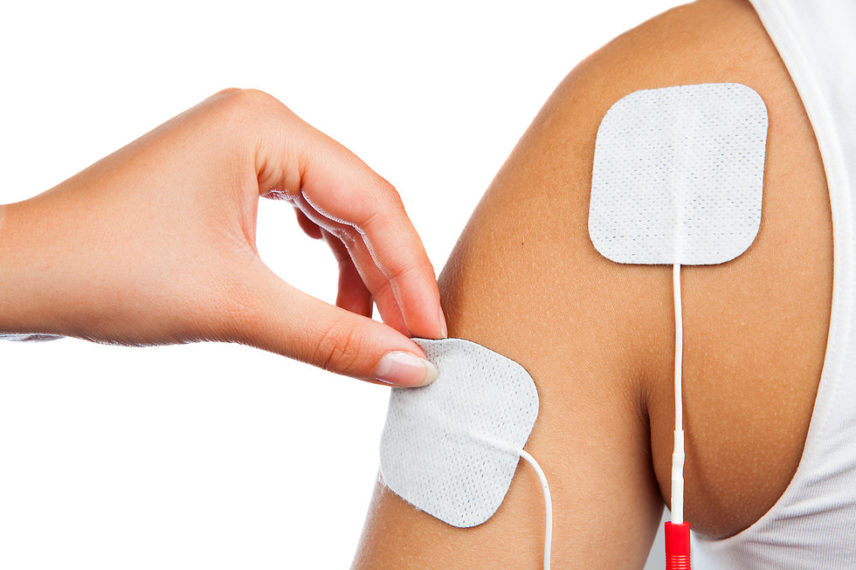Several different electrical stimulation devices exist, each producing different frequencies, waveforms, and effects.
Electrical modalities include:
- Transcutaneous Electrical Nerve Stimulation (TENS) (the most commonly used)
- Interferential Current (IFC)
- Electrical Muscle Stimulation (EMS)

Transcutaneous electrical nerve stimulation (TENS)
TENS is a pain management technique that uses electricity to help alleviate pain. TENS treatment involves placing small electrodes, devices that conduct electricity, on the skin over the part of the body that’s in pain; they are held in place with adhesive. The electrodes are then attached to a machine that releases small waves of electricity, sending tiny electrical impulses through the electrodes to the painful joint or area of the body.
It’s thought that the electrical impulses interrupt messages about pain sent from the nerves to the brain. The electricity blocks the activity of the pain receptors, which send those pain messages. If the brain doesn’t get the messages from the nerves, it doesn’t know that there’s pain, and you don’t feel any. Another theory behind transcutaneous electrical nerve stimulation is that the electrical impulses released during TENS encourage the body to produce more of its own endorphins, which are natural pain relievers.
The electrical currents emitted by TENS are very low; so don’t be worried.
Interferential Current (IFC)
IFC modulates a high frequency (4000 Hz), versus TENS which typically delivers at 125 Hz. When current is applied to skin, skin resistance decreases as pulse frequency increases. Thus, IFC crosses the skin with greater ease and with less stimulation than with TENS. Interferential current reaches greater depths and over a larger volume of tissue than other forms of electrotherapy. Normally, very deep pain is difficult to reach with traditional modalities. IFC increases circulation as well.
Interferential current therapy has been used extensively to help manage pain, edema, and inflammation due to soft tissue irritation from trauma or degenerative changes, with less dependence on narcotics.
Electrical Muscle Stimulation (EMS)
Electrical muscle stimulation uses an electrical current to cause a single muscle or a group of muscles to contract. By placing electrodes on the skin in various locations a therapist can recruit the appropriate muscle fibers. Contracting the muscle via electrical stimulation helps strengthen the affected muscle. Versus IFC and TENS, EMS uses various frequencies and wave lengths to cause a muscle contraction. The therapist can change the settings to allow for a forceful or gentle muscle contraction. Along with increasing muscle strength, the contraction of the muscle also promotes blood supply to the area that assists in healing.
